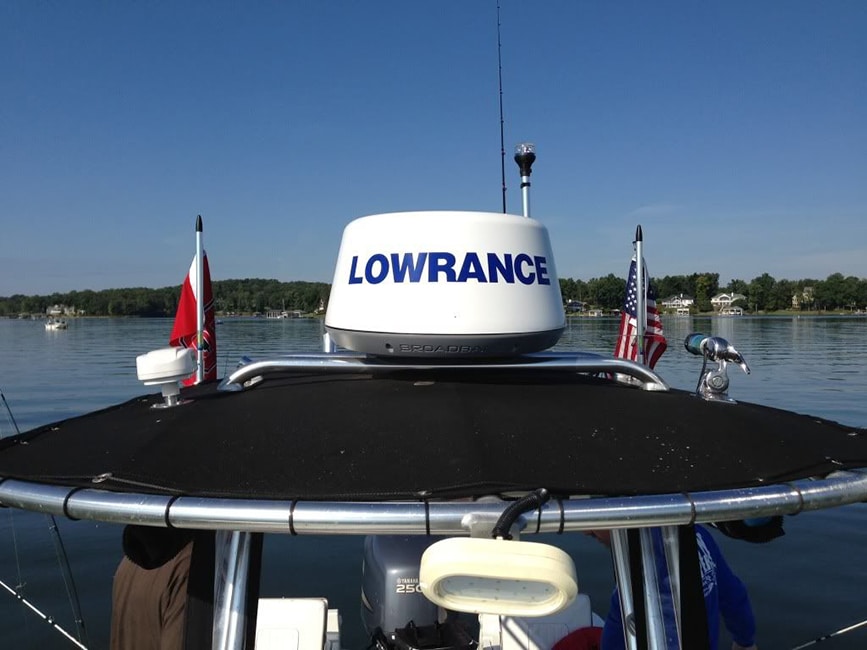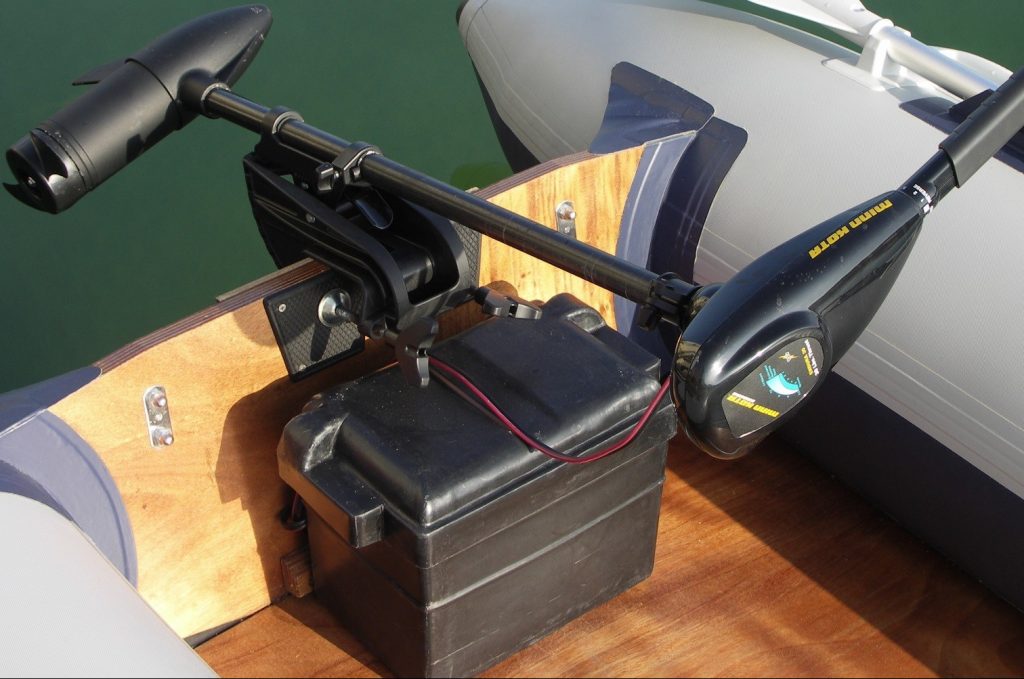

If you’re planning on setting sail for a few days, probably even without a destination in mind, it’s important to think about how you’ll keep your boat powered throughout the journey. Sailboats use the wind to power their motion, but with the best marine solar panels, they can also get the energy from the sun to power your electronics. Marine solar panels are suitable for motorboats as well as a supplementary energy source to help you save fuel.
The popularity of marine solar panels has exploded as solar technology has improved, which is why there is now a huge variety of solar panels for marine use. In order to help you find the best solar panels for your boat, we considered a number of features. First, we looked at whether the panels use monocrystalline, polycrystalline, or thin-film cells – these different cells offer differing efficiencies, lifespans, and prices. We also considered the maximum wattage, voltage, and current of those panels, since this affects how they will integrate into your boat’s electrical system and what you can use them for. Finally, we took into account how much space the panels take up and how much they weigh – essential things to note on a space-limited boat. We came up with a list of top 7 picks, and the Sunforce 5-Watt Solar 12V Battery Trickle Charger deserved our Editor’s Choice nomination.
More features: durable aluminum frame, completely weatherproof, built-in overcharge/discharge protection, compact, easy to install
These flexible marine solar panels from Sunforce are extremely cheap, at just over $30 per panel. They’re also small and lightweight, which allows you to deploy multiple panels in versatile configurations anywhere on your boat. That makes them a favorite among owners of small sailboats who want a way to charge small electronics without turning on the engine.
The panels come with an aluminum frame and are designed to be completely weatherproof.
However, power from these thin-film panels doesn’t scale well. That is why it is quite hard to achieve higher power output. On the other hand, these compact thin-film cells are great for charging 12-volt batteries and last for 10-15 years at a budget-friendly price.
More features: foldable solar panel kit with controller for 12V battery charging, has USB 5V output for phones/USB devices, the charge controller is removable for power bank or generator with regulator itself, weather-resistant, water-resistant, industrial-strength PET polymer laminated, 12 month warranty, portable
These foldable marine solar panels from ACOPOWER are expensive, but they come with everything you need to power your boat from the sun. The solar kit comes with a removable charge controller, which is adaptable for use with a power bank generator if you have one on board. On top of that, users really liked having a USB outlet directly on the panels themselves so that you don’t have to worry about wiring to charge your smartphone.
The foldable design and the light weight of these panels makes them easy to move around your ship and to mount anywhere. Users also liked that the panels are relatively small in size, which makes it easier to find a place for them on any boat.
One major thing to watch out for with these solar panels is that they only come with a 12-month warranty. That’s shockingly low for solar panels, which are usually covered for multiple decades.
More features: sleek and durable, 25-year power output warranty: 5 year/95% efficiency rate, 10 year/90% efficiency rate, 25-year/80% efficiency rate, pre-drilled holes on the back of the panel allow for fast mounting and securing, can be used for many different applications, has bypass diodes
These polycrystalline panels from Renogy offer impressive value for powering your boat. Each panel is capable of producing a maximum of 100 watts, and the panels aren’t so large that you can’t mount two or more of them on a medium-sized sailboat.
The best thing about these solar panels for marine use is that they’re extremely durable. The solar cells come with a 25-year warranty, while each panel is surrounded by a sturdy lightweight aluminum frame. The panels are rated to withstand rain and snow, and users report that they hold up well when the wind is creating spray off the water.
Users also liked that the panels come with pre-drilled holes for mounting and wiring. It makes installation fast and easy on the majority of boats.
More features: anti-reflective, high transparent, low iron-tempered glass, 2400 Pa wind resistance, 5400 Pa snow resistance, IP65 water resistance ratings, pre-drilled holes on the back, high module conversion efficiency, advanced encapsulation material with multilayered sheet laminations, has bypass diodes
These 100-watt polycrystalline panels from HQST are a close second to the Renogy panels. They’re slightly cheaper and just as durable, with the ability to withstand winds up to 2,400 Pa. Boaters loved that they’re also rated to IP65 water resistance, which ensures that they can stand up to the nasty conditions experienced out on the open ocean.
Just like the Renogy panels, these solar panels come with pre-drilled holes to make installation fast and easy. Many boaters actually preferred these panels because they have higher efficiency than the Renogy panels when using a series of five panels or more. That makes them the ideal choice for higher-wattage applications, such as powering most of your boat’s electronics throughout the day.
More features: suitable for grid-tie or off-grid applications, outstanding electrical performance under high temperature and low irradiance conditions, kit includes charge controller with user-adjustable settings, solar cable, MC4 connectors, mounting brackets
This 100-watt polycrystalline solar panel from WindyNation appears surprisingly expensive at first until you realize it’s a full solar kit. The panel comes with a charge controller, which is extremely helpful if you plan to use this solar panel to charge a 12-volt battery. The controller can handle up to four panels in a 12-volt system, which is ideal if you need to generate more power from the sun. In addition, the kit comes with all of the wiring and mounting brackets you need to install your panels.
The main disadvantage of these panels is their size. At 40 inches long on one side, users found that it can be hard to find a good spot to mount them on some boats. But, the sub-11-pound weight is quite favorable compared to the Renogy or HQST panels.
More features: made of ETFE material as high as 95%, better at high temperature resistance, anti-corrosion, anti-fouling, easier to clean, up 23.5% solar energy conversion, 248-degree flexible, water-resistant, 5-layered plastic film wire protection, ultra-thick, easy to install
This flexible solar panel from Newpowais a perfect pick with a high solar energy conversion rate and perfect reliability. The panel boasts 100 watts of power and is straightforward to mount anywhere on your ship since it doesn’t require a flat surface. Just keep in mind that bending the panel may leave some of it without direct exposure to sunlight.
Users appreciated how lightweight this solar panel is, at under five pounds. They also liked the EFTE coating, which improves the resistance of this panel if you sail in colder regions. Perhaps most important, that users found that Newpowa’s customer service was excellent at responding to issues.
More features: high efficiency, retains over 80% of efficiency even after 25 years of continuous use, compact, includes 12V battery charging kit with controller and 3′ cable length
This small 30-watt solar panel from Instapark is great for getting the benefits of monocrystalline solar cells without breaking the bank. The panel is extremely efficient and should last for more than 25 years on your boat.
Importantly, this panel comes with a 12-volt battery charging kit, including a charging controller. That can save you a lot of money down the road if you decide to add more panels to your boat.
However, the panel itself wasn’t our top choice for a monocrystalline solar panel. It’s heavier than the Kingsolar panel while offering just one-third of the output power and none of the flexibility. Users still found this panel a wonderful choice for its smaller size compared to other panels, so it is easier to install it on your boat.
The idea of putting solar panels on your boat may seem quite easy – you’ll just mount some panels, and then you will be able to charge your batteries or run your electronics right away. But choosing the proper solar panels for use on a boat is anything but simple. There are different types of panels, and every panel offers different power output properties.
In our buying guide, we’ll cover everything you need to know about the best solar panels for boats and explain how to get the right panels for your needs.
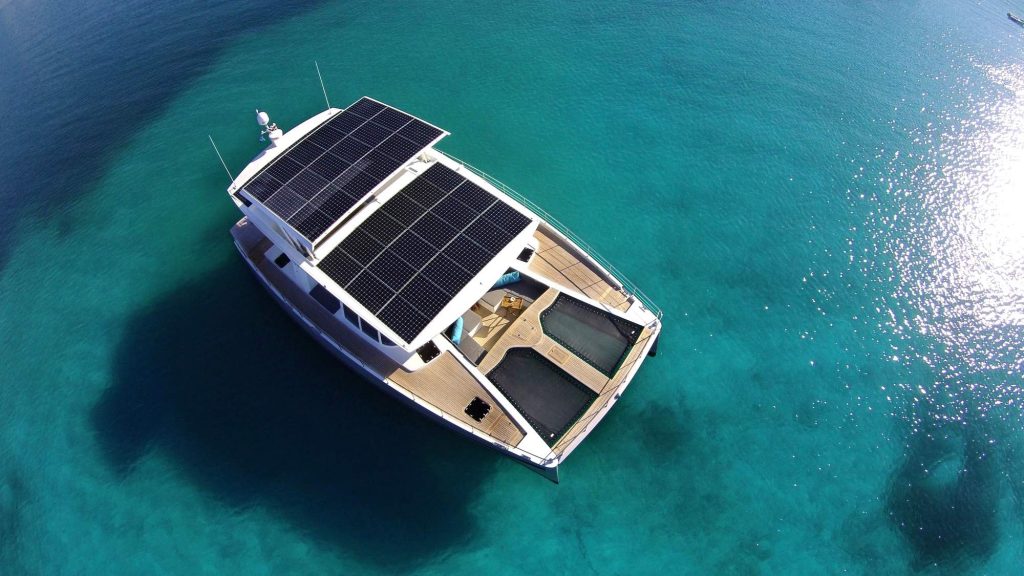
The first question you need to ask yourself when choosing solar panels is how much power you actually need. Some boaters use solar panels only sparingly, such as for charging phones and other small electronics. Other boaters are relying on their solar panels to run a refrigerator, water purifier, and navigation system throughout the day. It’s also important to consider whether you’ll be using your engine as a minor or a major supplement to your solar panels to provide power.
Once you know how you plan to use your solar panels, you can calculate your power draw. Essentially, you’ll need to add up the wattage requirements of everything you want to power with your solar panels. The max power of your panels should comfortably exceed this estimated power demand. However, remember that max power is just that – a maximum. You’ll need more battery capacity to deal with cloudy days.
Depending on how much power you need, you can either opt for panels with more power – like the 100-watt Newpowa, WindyNation, Renogy, or HQST panels – or for a greater number of less powerful panels.
It’s also essential to think about the current and voltage your panels will produce. You need at around 10.5 to 14.6 volts to charge a 12-volt battery, but having more than 20-30 volts will require a voltage regulator.
The size and weight of marine solar panels typically determine their power output. That said, efficiency also plays an important role in the relationship between size and power. For example, the Instapark panel is actually larger and heavier than the ACOPOWER panel, which puts out more than twice as many watts.
Size, weight, and portability are important to keep in mind on a ship because space is always limited. On top of that, depending on how you have your solar panels mounted, you’ll probably want to carry them above and below deck every time a storm moves over your ship.
So, it’s a good idea to spend a little extra money or to opt for multiple smaller panels in order to have them be easier to move around your ship.
Life at sea can be hard for solar panels, which is why durability is an important consideration when choosing marine solar panels. Many solar panels designed for marine use come with a water-resistant covering to shield them from water carried by the wind. But the type of solar panel you choose also matters – mono- and polycrystalline solar panels tend to last much longer than thin-film solar panels. Look for a 10-year or longer warranty whenever buying a solar panel for your boat, since most crystalline solar panels should last up to 25 years before they need to be replaced.
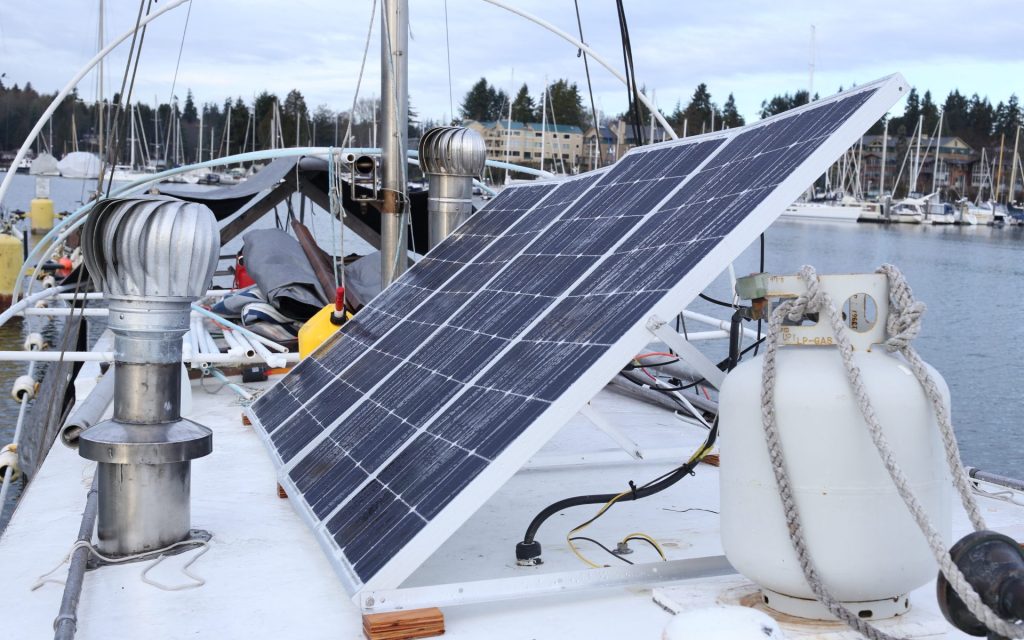
Monocrystalline solar panels, like those from ACOPOWER, Instapark, and Newpowa, are fantastic for boat use. They offer high efficiency and don’t lose it as they heat up in warmer climates. But, monocrystalline solar panels are the most expensive options. They’re also not the most suitable for any situation since they lose a large degree of efficiency in colder climates.
Polycrystalline solar panels like the Renogy, HQST, and WindyNation panels are more popular among mariners. That’s because they’re cheaper and work well in a wider variety of temperature conditions. Polycrystalline panels aren’t quite as efficient as monocrystalline panels, but the reduced costs largely make up for this by allowing you to buy additional panels.
Thin-film solar panels like the Sunforce panel aren’t all that common on boats because they are nowhere near as efficient as crystalline solar panels. That means that if you want to generate a lot of power with thin-film panels, you need a lot of space covered with solar cells. So, thin-film solar panels are typically reserved for low-power applications on sailboats.
Your solar panels’ performance will depend in part on what’s going on around your ship. As you might expect, cloudy conditions can dramatically affect the effectiveness of your solar panels. In very overcast weather, the current coming from your panels can slow to a trickle. This is when you may need to have much more power capacity than you actually need for a day, or to help your batteries with the boat’s engine.
Temperature also matters. If you are sailing in warmer climates, monocrystalline solar panels are much more efficient while polycrystalline solar panels can’t show the great performance. The opposite is true in colder temperatures when monocrystalline panels generate significantly less power.
Many marine solar panels, including the models from WindyNation, ACOPOWER, and Instapark, come with kits to help you install and get started with your panels in no time. Connecting your panels together without any special skills may be a hard task. This is why we recommend you to look for the kits with cables. Controllers are important for regulating the power output from your panels to protect your batteries from overcharging and damages. The Instapark panels also come with a charging kit to help you wire your panels directly to a 12-volt battery.
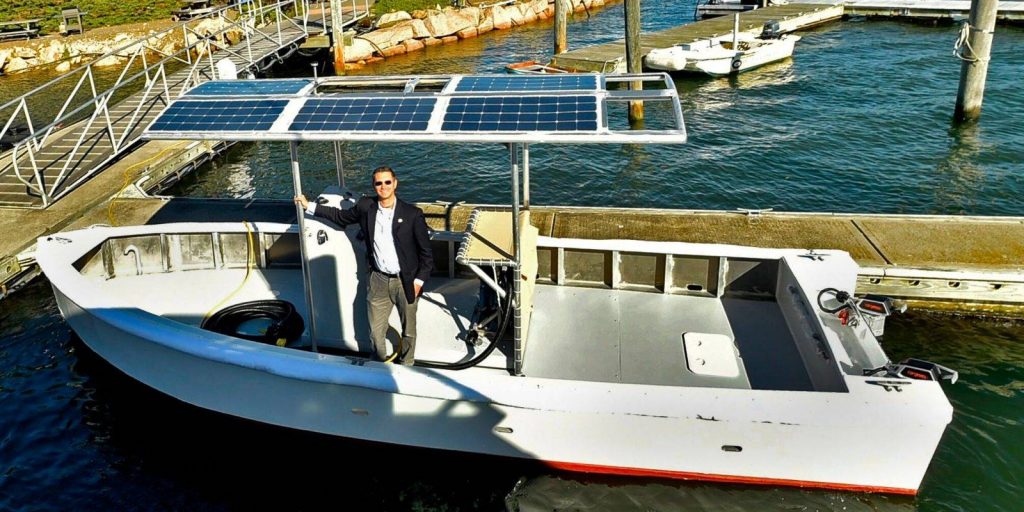
Solar panels have come down dramatically in price in recent years, and many solar panels for marine use are now quite affordable. Our budget pick, the thin-film Sunforce panel, costs just over $30 per panel and is a great choice for meeting low power needs on a budget. Prices for crystalline panels are higher, but you can expect to spend between $80 and $200 per panel. Our editor’s choice, the Renogy 100-watt panel costs just $100.
The Sunforce 5-Watt Solar 12V Battery Trickle Charger deserved to be the best marine solar panel as this budget-friendly device helps to maintain and charge small devices without the engine running.
The ACOPOWER 12V 70 Watt Foldable Solar Panel Kit & 5A Charge Controller took the second place because you are able to move and place this panel anywhere you want. In addition, the controller is compatible with a power bank generator and has the port for your phone.
And finally, you may consider the Renogy 100W 12V Solar Panel if you want durable and weather-resistant solar panels, which generate a high amount of energy. Holes for fast mounting and optimal size of each unit make them an ideal option for your vessel.
